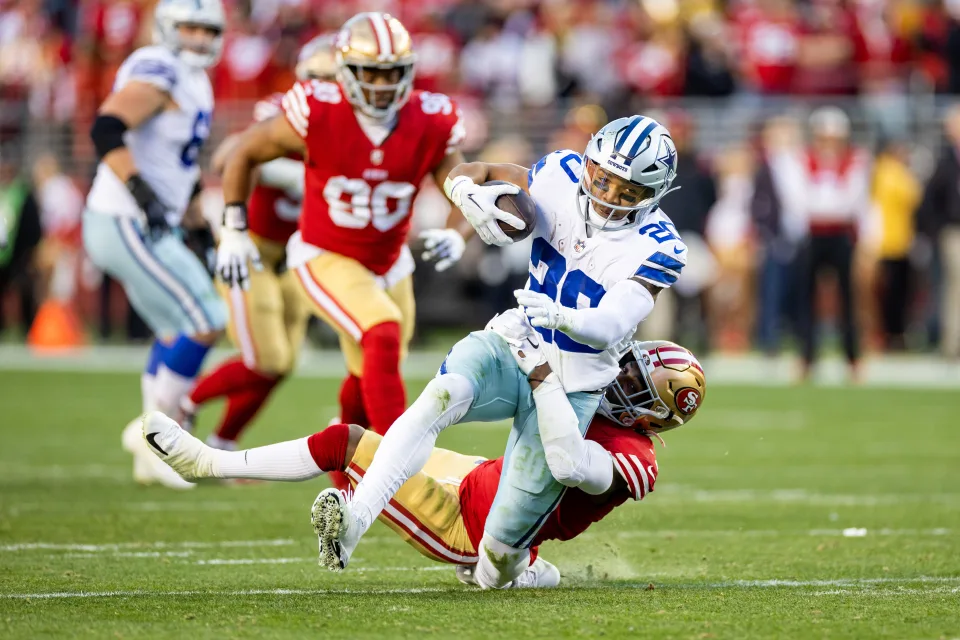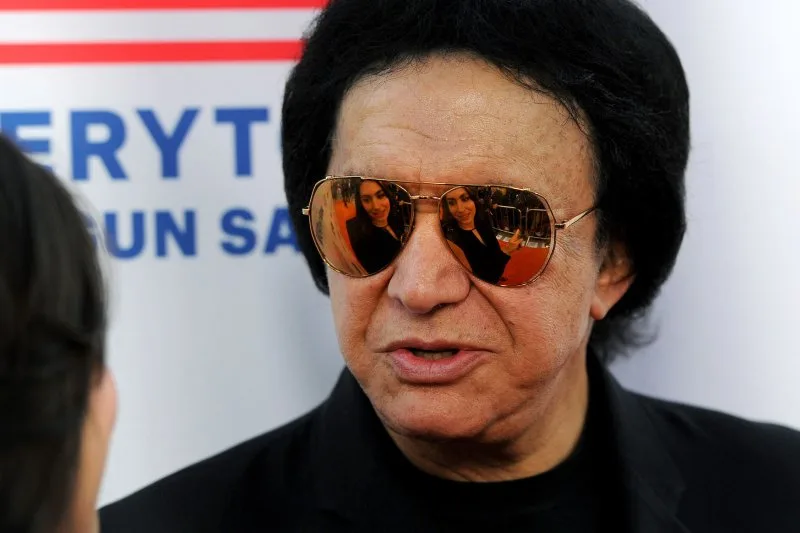NEW YORK — Momentum is building for the NFL’s next on-field rule change.
The league’s competition committee, as well as its health and safety committee, are discussing how to respond to a tackling technique that their data says “results in about a 25 times rate of injury as a typical tackle,” executive vice president Jeff Miller said.
The league calls the tackle in question a “hip-drop tackle.” If that doesn’t clarify the play to you, you’re not alone. The league is trying to better define what does and doesn’t constitute it.
“It is an unforgiving behavior, and one that we need to try to define and get out of the game,” Miller said.
NFL competition committee chair Rich McKay called the tackle a “cousin” to the horse-collar tackle, which consists of grabbing the inside collar of the back or side of an opponent’s shoulder pads or jersey, or the jersey at the name plate or above, to pull a runner toward the ground. A hip-drop tackle similarly involves a tackler grabbing a ball carrier from behind and pulling him down in a manner that prevents self-defense.
“The defender’s encircling, tackling the runner, and then swinging their weight and falling on the side of their other leg, which is their ankle or their knee,” McKay said. “You can see what they do, because it can be a smaller man against a bigger man, and they’re trying to get the person down. That’s the object of the game.
“But when they do it, the runner becomes defenseless.”
Injuries result when ankles, knees and other parts of players’ lower bodies become trapped underneath a defender.
Horse-collar tackles warrant a 15-yard penalty and automatic first down, which could be legislated when the runner’s knees are buckled even if they aren’t pulled completely to the ground, according to the NFL rulebook.
Cowboys executive vice president Stephen Jones, a member of the competition committee, echoed McKay in calling the hip-drop tackle “the brother or the sister” of the horse collar.
“They grab them around the hip and sling their body around and land on the back of their legs,” Jones told Yahoo Sports on Tuesday from the league meetings. “I wouldn’t say it’s intentional all the time. But unfortunately, it’s a deal kind of like the horse collar that when it happens, people get hurt.
“It’s a very injurious play.”
Jones cited recent members of his own roster who were injured on the play. Cowboys receiver KaVontae Turpin injured his ankle on a hip-drop tackle two weeks ago in San Francisco, and Cowboys running back Tony Pollard fractured his leg last the postseason when a defender hip-drop tackled him.
Kansas City Chiefs quarterback Patrick Mahomes also battled a playoff ankle injury that resulted from a hip-drop tackle.
The NFL met with coaches this offseason about “some concern about how you officiate it,” Jones told Yahoo Sports. Particularly in the box, where the NFL doesn’t apply horse-collar rules against quarterbacks, questions loom. Conversations with coaches led to warnings: If this technique isn’t eliminated organically, expect a vote this offseason on penalizing it.
The competition committee “discussed it heavily” at Tuesday’s league meeting session, Jones said.
Analyses of 2023 data will continue to inform what eventually happens in the spring.
McKay acknowledged the criticism the league would likely get if they eliminate another tackling technique, as some fans wonder if the game is becoming either soft or unfairly favoring offensive production. It’s not surprising that the league wants to improve the health and availability of its most marketable stars, many of whom play on offense.
“You’re always going to have the defender come back and say, ‘Hey, you’re making it harder on us,’” McKay said. “And the answer to that is, ‘Yes, we are.’ Because when there’s a tactic that’s being used or a technique that’s creating an unreasonable risk of injury to a player, it’s our job to try to find a way to regulate that.
“If we can get it out, we should get it out.”
NFL could soon ban tackling technique it says creates ‘25 times’ the injury risk




